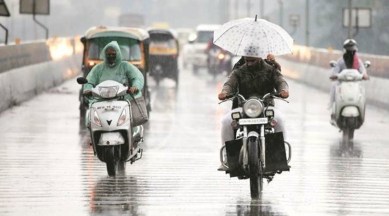This is a section for real-time weather updates and forecasts pertaining to cities across India and the globe. Everything under the sun, ranging from commitments to the accuracy of reports, punctuality in provisioning of information, and also insights into changing weather patterns, extreme climate events, and seasonal updates for keeping people alert and informed. Daily, weekly, and long-term forecasts. With this, data from reputed sources is going to include the India Meteorological Department (IMD), several global climate agencies, and satellite imagery. Monsoon tracking, heatwave alerts, cyclone warnings, and snowfall predictions would be fruits of this collaboration, with the information put in an understandable way before the consumers of this service. Apart from prediction once in a while, there are also discussions on climate changes, air quality updates, and other environmental issues that affect several regions. AQI reports, pollution trends, and experts' views on pro or anti-climate change policies can be provided to cater to discerning readers who can make their own decisions regarding health matters and safety. Strongly base for credible, live, and certainly relevant, covering weather on the pages of IndianExpress.com about readers being at the forefront of unpredictable weather changes and much more about the wider environment concerning trends in global climate.
The monsoon is arriving late. What it means, the impact: 5 takeaways
In the last five years, only once has the onset happened on June 1. On two occasions, in 2018 and 2022, it occurred a couple of days earlier, on May 29, while in 2019 and 2021, the rains set in a few days later.

Monsoon will begin late this year, the Indian Meteorological Department (IMD) said on Tuesday, May 16, fuelling concerns over a longer-than-usual hot weather season.
The crux: Monsoon normally hits the Kerala coast on June 1. This year, the weather office has predicted a three-day delay — with rains expected to hit the southwest coast on June 4.
The fallout: India is a largely agricultural economy, and therefore heavily reliant on rain. The delay of the monsoon, which brings about 75 percent of the country’s annual rainfall, may spell difficulties for the farmland.
FYI: The onset of the monsoon over Kerala marks the beginning of the four-month, June-September southwest monsoon season over India. After its onset over Kerala, the monsoon spreads over the entire country by July 15. The southwest monsoon is keenly awaited, and the IMD declares its arrival only after certain well defined and measurable parameters are met. Meteorologists check for the consistency of rainfall over a defined geography, its intensity, and wind speed.
But, but, but: The onset of monsoon is just a marker for the beginning of the rainfall season. It has no bearing on the amount of rainfall that happens during the season.
How unusual is it?: In the last five years, only once has the onset happened on June 1. On two occasions, in 2018 and 2022, it occurred a couple of days earlier, on May 29, while in 2019 and 2021, the rains set in a few days later.